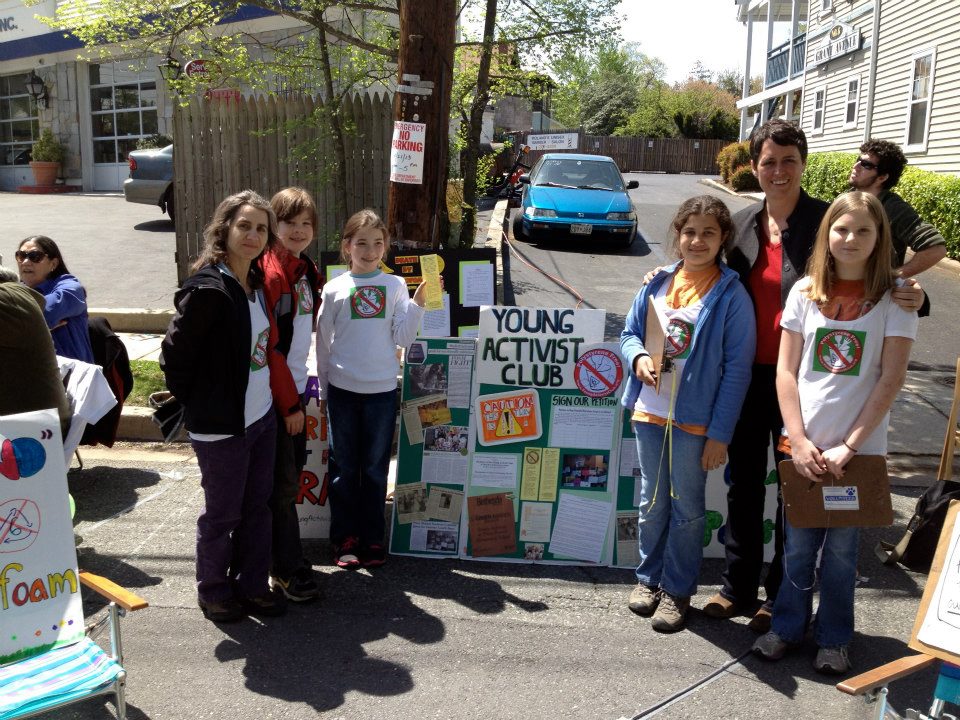Compost has the potential to become a driver of local economic growth and a vital tool in cleaning up the Chesapeake Bay and other watersheds. Long prized by gardeners and farmers, compost is the soil-like material produced by decomposed organic waste, such as yard trimmings and food scraps.
According to ILSR’s May 2013 report, Pay Dirt: Composting in Maryland to Reduce Waste, Create Jobs & Protect the Bay, expanding composting and local compost use could support almost 1,400 new full-time jobs in Maryland, paying wages ranging from $23 million to $57 million.
ILSR identified 42 facilities that compost, mulch, or recycle natural wood waste in Maryland. The 23 facilities that participated in ILSR’s survey employ 4.1 full-time equivalent jobs per 10,000 tons per year of material composted. In contrast, the state’s three incinerators employ 1.2 jobs per 10,000 tons per year of material they accept. Data from six of the state’s 22 municipal solid waste landfills indicate that landfilling employs 2.1 jobs per 10,000 tons per year landfilled. See Table 1 below, which also compares the jobs per $10 million dollars of capital investment.
On a per-ton basis, in Maryland, composting (including mulching and natural wood waste recyclers) employs two times more workers than landfilling, and four times more workers than incineration. On a per-capital-investment basis, for every $10 million invested, composting facilities in Maryland support twice as many jobs as landfills and 17 more jobs than incinerators.
ILSR also found that the smaller the facility, the higher the job-to-ton ratio. Ten sites in its survey handle 5,000 tons per year or less. Seven sites handle between 5,000 and 20,000 tons per year. And six facilities handle 20,000 tons per year or more. Small-scale facilities, for instance, employ 13.6 jobs for every 10,000 tons per year processed; medium sized, 5.9 jobs; and large sites, 2.8 jobs per 10,000 tons per year composted.
In addition to direct jobs at composting sites (such as skilled equipment operators for windrow turners, front-end loaders, grinders, and screeners), further jobs are supported in the use of compost, which also tends to take place regionally.
ILSR contacted 13 for-profit businesses that use compost for soil erosion control, stormwater management, and other green infrastructure to determine how many workers they employ and how much compost they use. Together these businesses, which span nine states from Maryland to California, employ 18 workers for every 10,000 tons per year of compost used (or 6.2 jobs per 10,000 tons of material composted).
If the estimated 1 million tons of organic materials now disposed in Maryland were instead composted at a mix of small, medium, and large facilities and the resulting compost used within the state, almost 1,400 new full-time equivalent jobs could potentially be supported, paying wages ranging from $23 million to $57 million. In contrast, when disposed in the state’s landfills and incinerators, this tonnage only supports 120 to 220 jobs. See Table 2 below.
To download the full report, click here.
Table 1: Jobs, Composting Vs. Disposal in MD
|
Type of Operation |
Jobs/ 10,000 TPY |
FTE Jobs/$10 Million Invested |
| Composting Sitesa |
4.1 |
21.4 |
| Compost Use |
6.2 |
n/a |
| Total Composting & Compost Use |
10.3 |
|
| Disposal Facilities | ||
| Landfilling |
2.2 |
8.4 |
| Burning (with energy recovery) |
1.2 |
1.6 |
a Includes mulching and natural wood waste recycling sites.
TPY = tons per year (of material composted)
FTE = full-time equivalent
Incinerator data based on Eileen Berenyi, Governmental Advisory Assoc. Inc., 2012-2013 Municipal Waste to Energy in the United States Yearbook & Directory. Westport, Connecticut. 2012.
Source: Institute for Local Self-Reliance, 2013.
Table 2: Potential New MD Jobs By Composting 1 Million Tons of Organics
| Option |
FTE Jobs |
| Burning |
120 |
| Landfilling |
220 |
| Composting |
740 |
| Compost Use |
620 |
| Total Composting |
1,360 |
FTE = full-time equivalent
Composting jobs based on one-third tonnage composted at small facilities, one-third at medium-sized facilities, and one-third at large facilities. Compost use jobs based on data from 13 companies using compost for soil erosion control, stormwater management, and other green infrastructure applications.
Source: Institute for Local Self-Reliance, 2013.





